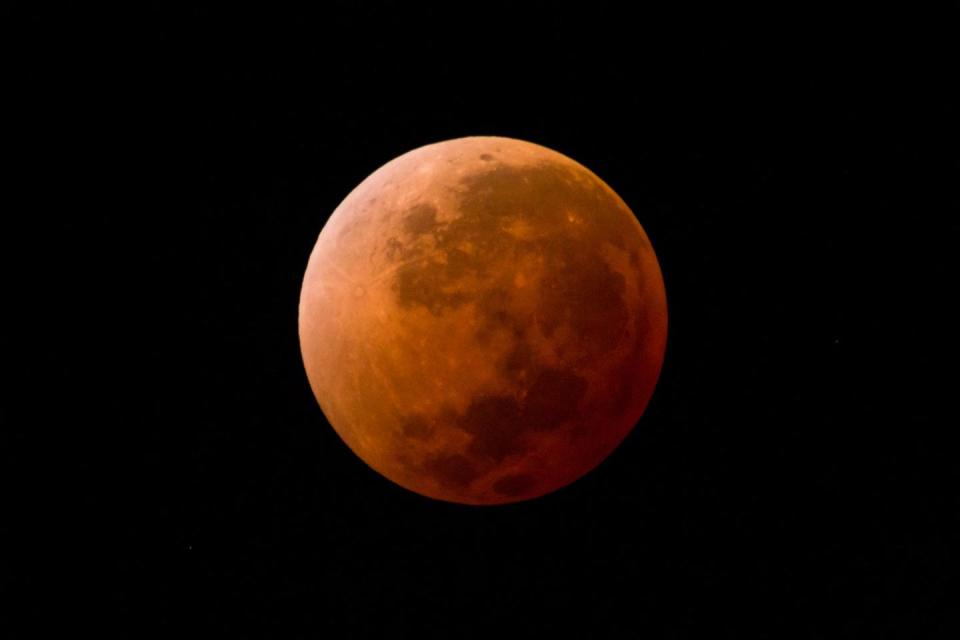What Is an Eclipse and Why do Solar and Lunar Eclipses Occur? Here's What You Need to Know

The next total lunar eclipse will be visible in North America on Monday, May 16, 2022; the next total solar eclipse will be visible on April 8, 2024.
Lunar eclipses occur when the moon passes through the Earth’s shadow; solar eclipses occur when the Earth passes through the moon’s shadow.
Solar eclipses will only be visible for another 600 million years—after that, the moon will be too far away to block the sun.
Although the next total eclipse (a lunar one) won’t happen over North America until 2022, it’s never a bad time to brush up on your knowledge of eclipses. Some of the most stunning celestial events, solar and lunar eclipses, are actually the result of a few spectacular coincidences—and we happen to live during the (relatively) brief time period in which solar eclipses will be visible.
Here’s exactly what an eclipse is and everything you need to know about total and partial lunar and solar eclipses, explained by the experts.
What is an eclipse?
There are two types of eclipses: solar and lunar. A solar eclipse occurs when the moon passes between the Earth and the sun, blocking its light from our vantage point. A lunar eclipse occurs when the Earth passes between the moon and the sun, casting a shadow and blocking out the light of the moon.
“Both lunar and solar eclipses happen because of shadows,” explains Walter Freeman, associate professor of physics and astronomy at Syracuse University in New York. This is unique from lunar phases, he says, which are created by the moon’s relative angle to the sun; the Earth’s shadow is not involved.
Eclipses are also divided into three main categories: total, partial, and annular. A total eclipse happens when the moon or the sun is entirely obscured from our view. A partial eclipse happens when only part of the moon or the sun is blocked by shadow. An annular eclipse is a type of solar eclipse (similar to a total one) that occurs when the moon appears slightly smaller than the sun, causing a bright annulus of light (or a “ring of fire”) to appear around the moon.
Why do eclipses occur?
If the Earth, moon, and sun were all perfectly aligned, Freeman says, eclipses would happen all the time. But they’re not; the moon’s orbit around the Earth is at a slightly different angle than our orbit around the sun. This means that all three heavenly bodies must be in the exact right position to cause eclipses, making them a relatively rare occurrence.
🌔☀️You’re just as obsessed with the heavens as we are. Let’s explore them together.
Solar eclipses are the result of a miraculous coincidence; although the moon is 400 times smaller than the sun, NASA writes, it’s also about 400 times closer, meaning both bodies appear to be about the same size. This allows for the moon to perfectly block the sun in the sky.
Because of the precise alignment necessary for these events, solar eclipses only occur during new moons, when the moon reflects none of the sun’s light. Similarly, lunar eclipses only happen during full moons, when the moon is at its absolute brightest.
We’re lucky enough to exist during a time in Earth’s history when solar eclipses are visible to us, since the moon is moving away from us at a rate of about 1.5 inches each year. Over 600 million years from now, the moon and the sun won’t appear so close in size, NASA says, meaning the Earth will never see a solar eclipse again after that point.
Where are eclipses visible?
Solar eclipses are visible only from the swaths of the planet where the moon’s shadow will pass, Freeman explains. Lunar eclipses, however, are visible across the entire globe—as long as the moon is above the horizon from your location. This is because the moon’s shadow is relatively small compared to the Earth’s; the moon casts a shadow on a thin part of us, but we cast a shadow across the entirety of the moon.
Lunar eclipses are safe to view with the naked eye, since you can look at a full moon with no eye damage. Solar eclipses, however, are much more dangerous to view, since they involve staring directly at the sun—famously not a very good thing to do. You’ll need special glasses or viewing methods to watch a solar eclipse or ring of fire directly.
Do lunar eclipses really turn the moon red?

Total lunar eclipses are sometimes referred to as a “blood moon”—and they’re some of the few occurrences when the moon actually does change color. This happens because in the absence of direct sunlight, the moon is lit indirectly, causing it to glow a dull red, Freeman explains. This is the same phenomenon that causes the brilliant glow of sunsets and sunrises—although the sun is not directly visible, we see red hues near the horizon.
When is the next total eclipse?
We’re in for a treat next year: A total lunar eclipse will be visible in North America on May 16, 2022. The next total lunar eclipse over North America will occur on Monday, May 16, 2022, nearly a year from now. A partial lunar eclipse will be visible from the United States on November 19, 2021, and the next “ring of fire” eclipse will be on October 14, 2023.
You Might Also Like

